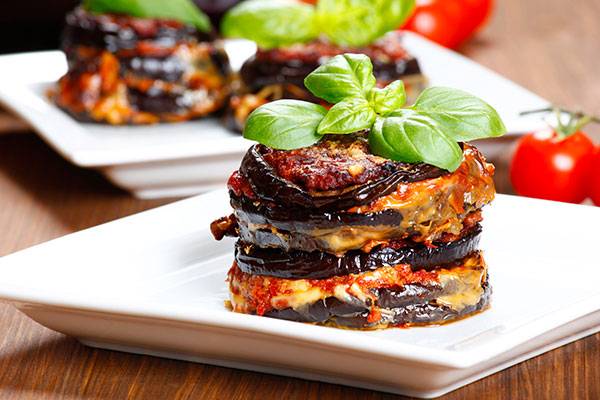The aubergine, a great ally for the digestion
The aubergine is a vegetable which comes in a variety of shapes and colours. Its shape can be long, spherical or oval and its color can be anything from black or purple to green and white.
fresh food
Share

The purple aubergine is the most common variety. It is typically long or spherical in shape with an intensely purple, almost brilliant black skin, with varieties such as the Black Beauty, Smooth Purple and Long Violet.
The aubergine originates from the Asian tropical and sub-tropical zones, although much later, its cultivation extended to Europe. Today, aubergines are eaten throughout the world, and many countries have a traditional dish created from this vegetable: caponata in Italy, mousaka in Greece, ratatouille in France, imam bayildi in Turkey and the escalibada or tumbet from Mallorca in Spain.
Did you know that… the aubergine was once used to soothe burns, reduce inflammation and as a decorative object
In our country, we can find aubergines in the markets all year round. When we buy them we should choose vegetables which are soft yet firm, with smooth, shiny skin, and a uniform colour without blemishes. Discard any that are wrinkled or have soft areas.

To find out if an aubergine is ripe, press the skin lightly with your fingers. If the depression you make remains on its skin, it is ready for eating.
From a nutritional point of view, the aubergine has a high water content and little energy value (29 calories/100 grams). It contains potassium, vitamin C, B vitamins and folates. Nevertheless, when compared to other vegetables, its fibre content is mainly provided by the skin and seeds, which is why eating the skin is recommended. Eating aubergines stimulates liver and pancreas function due to its diuretic and laxative properties and helps digestion.
To avoid the aubergine’s bitter taste, it can be salted and left to rest for around 30 minutes, or, alternatively, you can add a few drops of lemon juice.
Aubergines can be eaten baked, boiled, fried, roasted and even preserved, like the Almagro aubergine. But one must avoid eating it raw as it contains solanin, a toxic substance which is destroyed by heat. Its subtle flavour permits the creation of many dishes, such as the escalibada, the Mallorcan tumbet, stuffed aubergine, salads and spreads.






